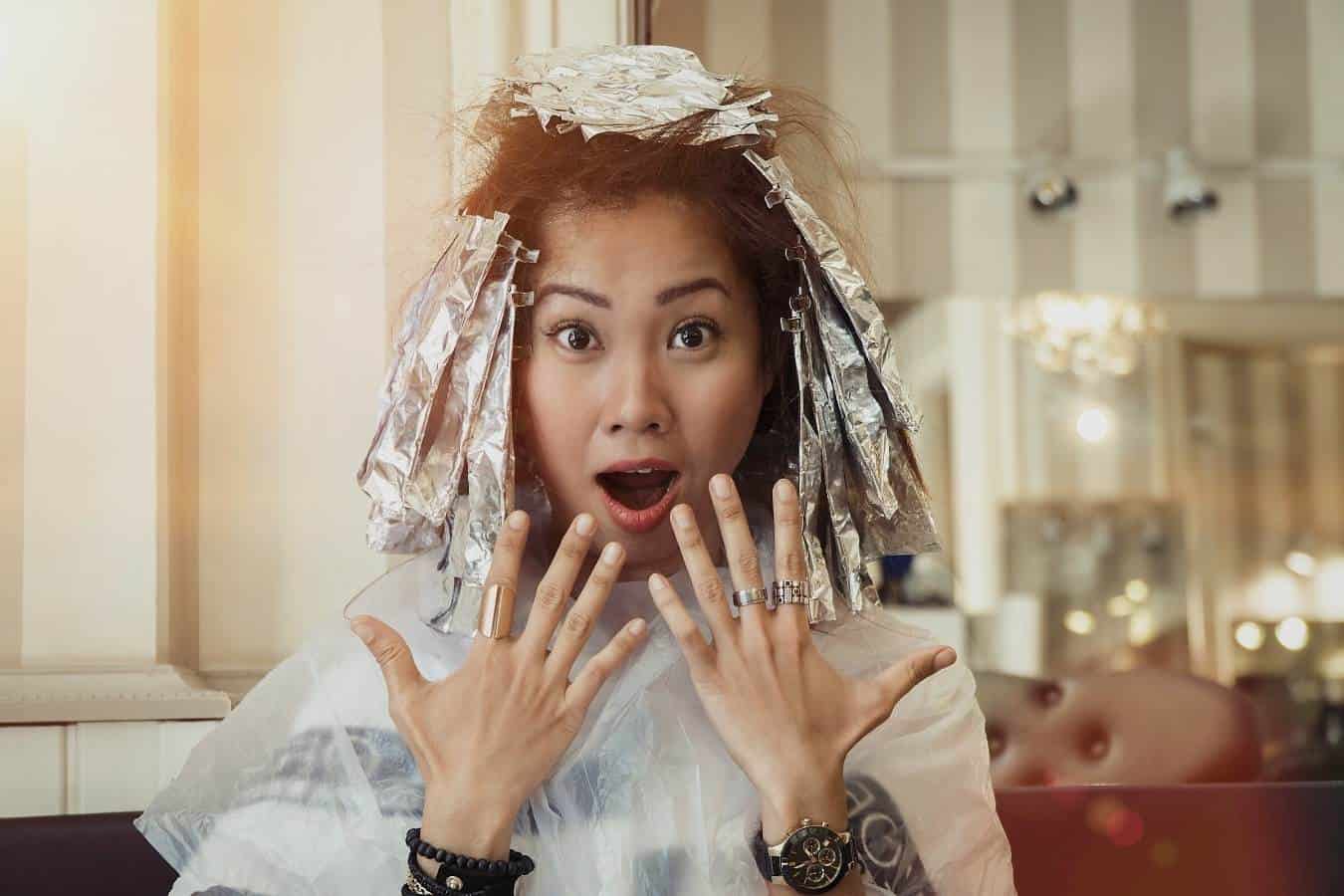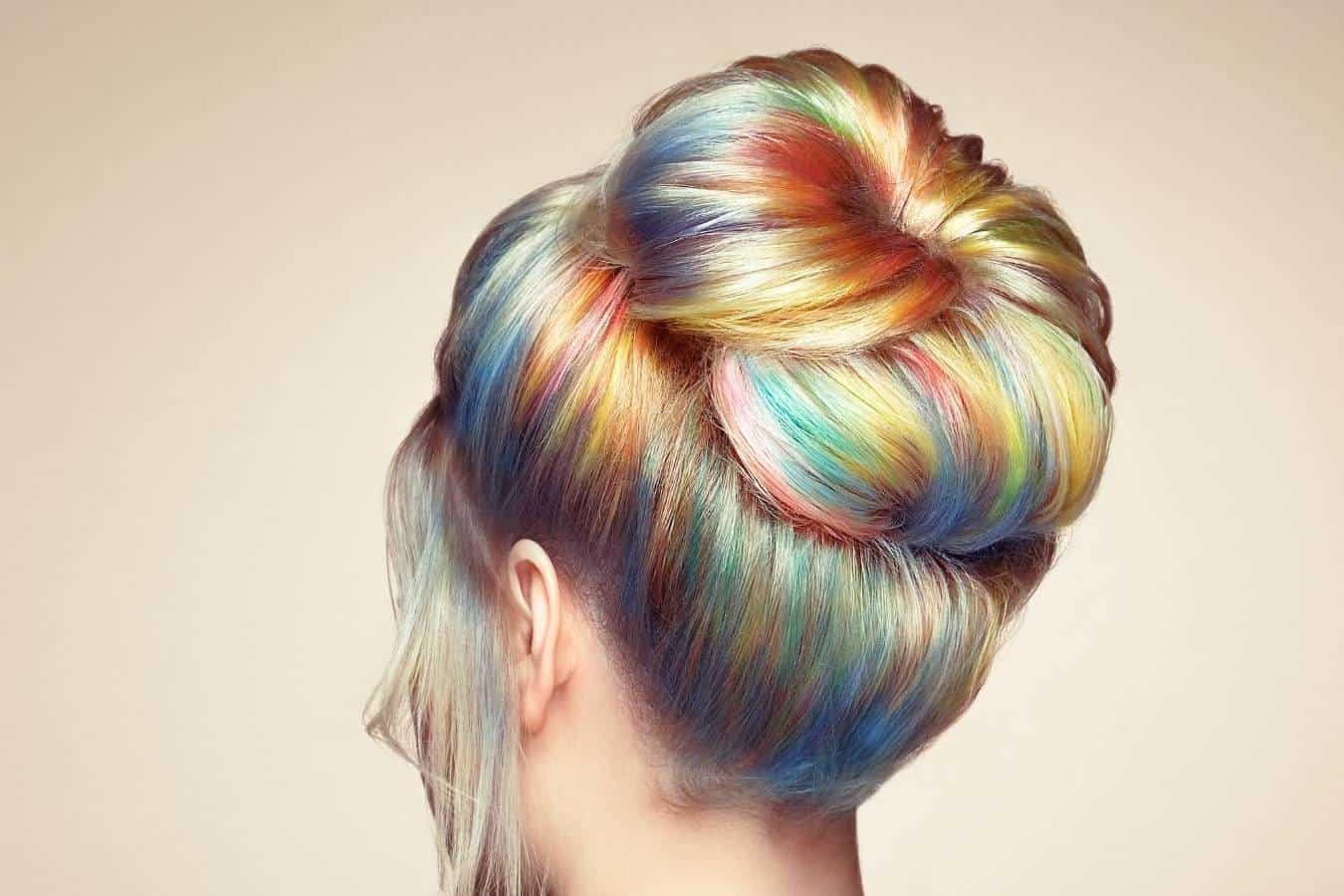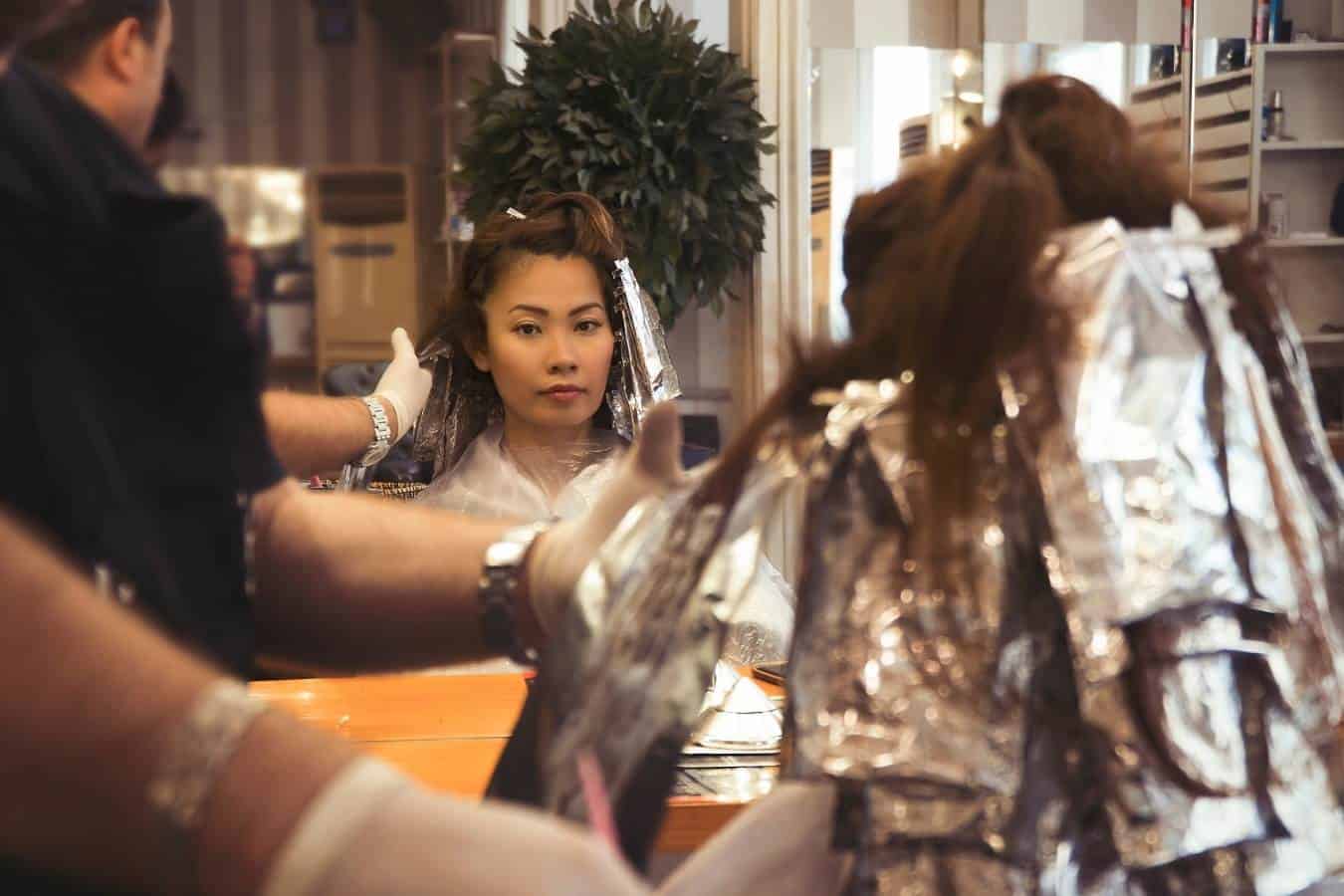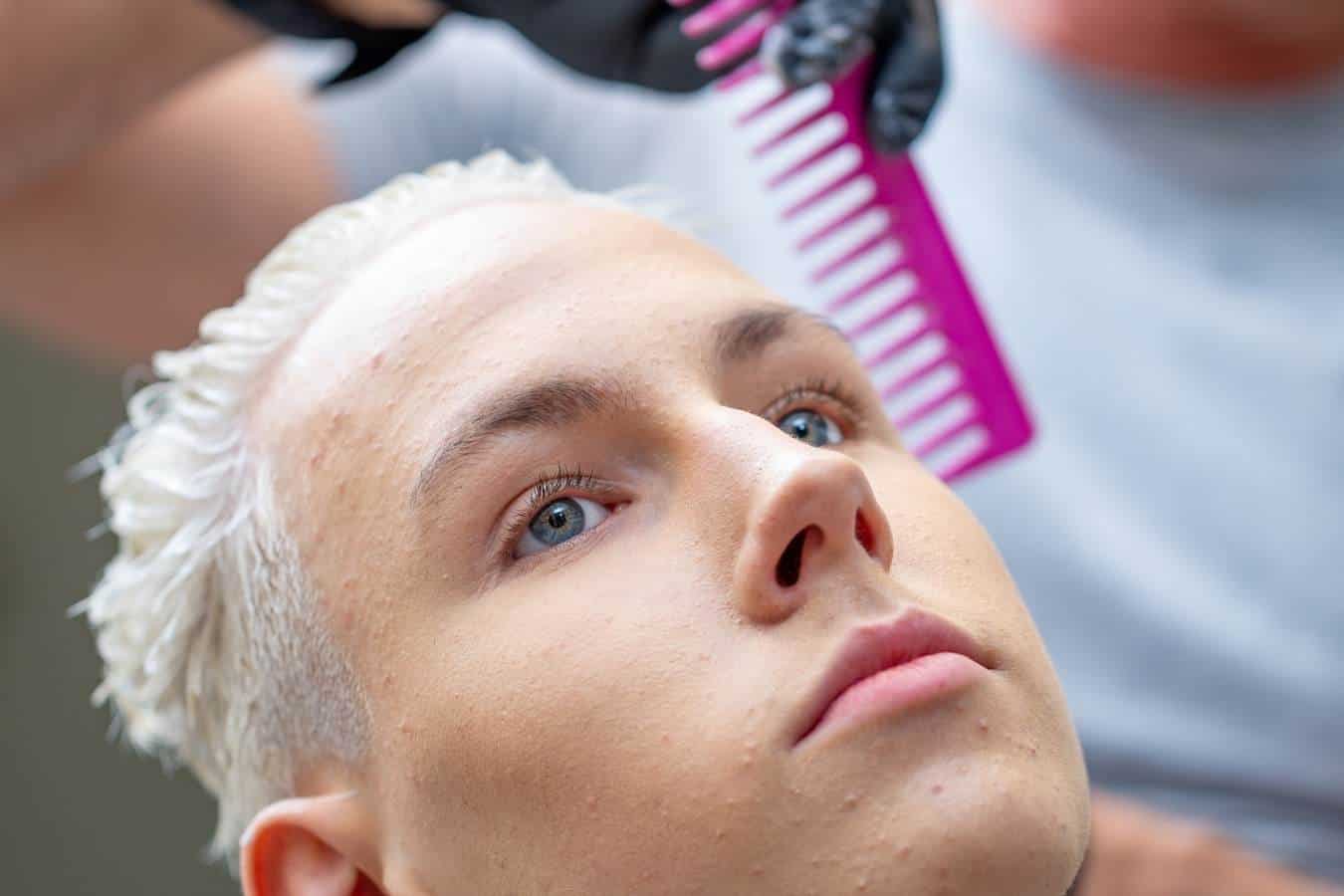Sometimes you color your hair, hoping to give your locks and yourself a new lease of life in the process. And whilst that can often work out, occasionally it doesn’t, in which case you might find yourself wanting to start the color process all over again.
This article will help you establish how often you can bleach your hair without causing damage and important factors to consider.

You should only ever bleach your hair once a day and a maximum of twice a month with a two-week wait between bleaching sessions. Only bleach your hair from six to eight times a year, too.
Why Does Bleach Damage Hair?
Bleach is damaging to our hair – there are no two ways around it.
Bleaching your hair is a serious chemical process. It’s also important if you’re looking to dye your hair, as it helps the color to better penetrate into your hair, which keeps it more vibrant and dynamic for longer.
Bleach is usually made of either ammonia persulfate or hydrogen peroxide.
It’s these ingredients that break apart your hair’s protein and penetrate the hair follicle in order to access the melanin that’s responsible for your natural hair color.
Bleach will strip the melanin in your hair strands, which is what makes them lighter.
That’s why if you have darker hair, you may need a more intensive bleaching process, as there’s more melanin to be stripped from your strands.
Bleach is so damaging for your hair because it literally strips it of its color and, in doing so, also saps any moisture from your strands.
The result? Dry, brittle hair that’s easily prone to frizz, dryness, or even breakage.
It’s this chemical damage that is the reason you don’t want to bleach your hair too often. You’ll know if your hair is over-bleached and over-processed if it has any of the following qualities:
- Dry, matted, or tangled hair that becomes knotted easily
- Frizzy, brittle hair that’s prone to split ends
- Hair that doesn’t hold color well or grow properly
- Dull, flat hair that lacks any shine or dimension
How Often Can You Bleach Your Hair Without Causing Damage?

If there’s one golden rule when it comes to bleaching, it’s remembering how often you can bleach your hair.
Never bleach your hair more than once on the same day. If you’ve colored your hair and you’re not satisfied with your look, you can bleach your hair again after two weeks.
However, you need to work to restore your locks in the interim period with deep conditioning and hydrating treatments.
Ideally, you’d leave at least two months between your bleaching sessions.
You can bleach your hair a maximum of six to eight times a year – the American Academy of
Dermatologists actually recommend waiting anywhere from eight to ten weeks between color sessions. This is so as to minimize any risk of damage.
Even if you have the optimal hair type, texture, and health for bleaching, you still don’t want to be exposing your strands to more than one bleach session a day.
If you apply bleach more than once a day, you’re really risking severe damage – maybe even hair loss.
At the least, you’re reducing your hair’s ability to hold any color going forward.
There are a number of factors that will impact how often you can bleach your hair, and these will vary from person to person.
They can include;
- The health of your hair
- Whether it’s been colored or bleached before
- Your base color
- The color you’re trying to get to
However, regardless of your hair’s condition, you should still aim to stick to the above rules regarding how often you can bleach your hair.
Stylists recommend only re-bleaching your hair once you’ve got an inch or so of new growth.
When you need to touch your roots up, however, you need to be careful that you don’t add any bleach to hair that you bleached last time.
If you’re not careful, your hair may swell and become vulnerable to damage.
Stick to retouching your roots every four weeks or so. Any more, and you may cause damage, but any less, and you may have uneven coloring.
Is It Okay To Bleach Your Hair After Dying It?
There are ways to bleach your hair after dyeing it – but remember, you are putting yourself at higher risk of experiencing damage.
As detailed above, you should also aim to wait two weeks between bleaching sessions.
You should also look to restore your strands with a hydrating, conditioning treatment in the interim.
If you do decide to bleach your hair after dyeing it, you should absolutely avoid using bleach with a high-volume developer.
This is only more likely to cause damage. If you can use bleach alternatives, all the better (see below for more on these).
How Many Times Should You Bleach Your Hair To Get The Color You Want?

There are a number of variables that may impact whether or not you get your desired color from a singular bleaching session.
For this reason, it’s difficult to provide a one-size-fits-all answer for how often you should bleach your hair in order to get your desired color. These can include:
- Your regular haircare products
- Whether or not you’ve dyed and/or bleached your hair before
- The condition and health of your hair prior to bleaching
- The type and volume of the bleach you use
- Your hair’s porosity (its ability to retain moisture)
- The original color of your hair
- The color that you’re trying to get your hair to
Inevitably, if you have very dark hair and are looking to go blonde, you’ll need more than one bleaching session.
If your hair is very porous, dry, or brittle to start with, this will also impact how well the bleach takes to your hair.
Any of the above factors can impact how often you’ll need to bleach your hair in order to achieve your desired color.
It’s this that can cause people to bleach their hair more often than is healthy, which may lead to long-term damage.
Tips To Remember When Bleaching Your Hair
Strand Test
It’s difficult to over-emphasize how important this is.
It will help you to gauge how your hair reacts to the bleach, as well as ensure that you account for any sensitivities you may experience from the bleach.
Use The Right Bleach
Is your hair darker? You’ll need to bleach your hair more than once in that case, which means you should probably purchase a less strong, lower volume bleach, so as to minimize damage.
Follow The Instructions
They’re there for a reason. Ensure that you follow any guidance for at-home bleaching so that you don’t leave the product in for too long.
Deep Condition After Bleaching
After having washed the bleach out of your hair – and be sure to do this thoroughly – use a deep conditioner in order to hydrate your strands and restore lost moisture.
Doing so right after bleaching can help to mitigate some of the bleach’s more harmful impacts.
You can also apply a hot oil treatment or coconut oil to your strands overnight (just remember to wash this out the following morning and wear a silk scarf over your tresses to protect your pillow).
Using a hair mask with proteins like keratin can also help your bonds to restore and restructure to their pre-bleach levels.
However, if your hair strands still feel dry or brittle after a deep conditioning treatment, you need to be avoiding bleach for as long as possible – at least two weeks.
This is to help your hair recover to its pre-bleach health. If you don’t allow it to do so, you do risk it becoming seriously damaged.
Avoid Styling Tools With Heat
Styling tools that use heat – so, hairdryers, flat irons, or curling wands – can contribute to dryness in your hair.
If you’ve just bleached your hair, you’re therefore doubling down on potential sources of damage. It’s best to therefore steer clear of styling tools that use heat if you’ve just bleached your strands.
Alternatives For Bleach

There are, thankfully, alternatives to bleach. You can tone your hair if it’s already lightened, or even use hair care products designed for colored hair. Color stripping is also an option – but it is damaging, too.
Toning
If your hair is already lightened, or if you’re already fairly blonde in color and are looking to lift your natural color by only a shade or so, you should consider using toner.
It’s less damaging than bleach but will still help to lighten hair and ensure an even coloration across your strands.
Unlike bleach, toner doesn’t contain a developer, which is why it’s less damaging.
If you’re blonde and noticing some yellow or orange tones coming through, or even brassiness, consider using a toner before reaching for the bleach.
Use Haircare For Colored Hair
Using a shampoo and conditioner that’s designed to preserve and maintain hair color can help to even out any tones of red or orange that you may notice in your hair.
If your hair is blonde, a silver or purple shampoo and conditioner can help; alternatively, haircare with blue tones is great for those who have colored their hair brunette.
Color-Stripping
Color-stripping is by far the most damaging of chemical treatments. Never use it in combination with bleach or other hair treatments, or you will end up with severe damage and dryness.
Color-stripping will break apart the bonds between your dye and melanin.
It won’t lighten your hair color, it will only remove any existing dye molecules in your strands. In order to do so, it can be very abrasive, which may result in damage.
Natural Methods
There are some natural methods that can help to lighten hair. Be aware that these are more likely to work on hair that’s already light.
If you have dark hair and are wanting to go blonde, for example, you’ll need more heavy-duty substances like bleach in order to do so.
Lemon juice can help to lighten hair a few tones, particularly if used alongside chamomile tea. Honey and vinegar can also work, as can vitamin C.
The sun, of course, is also a way of naturally lightening your hair – just be sure to use a UV protectant!
Spray-In Lighteners
Spray-in hair lighteners will tend to use a minimal amount of bleach in order to lighten your hair.
Be aware that the effect is more likely to look like highlights, and won’t work on very dark hair.
Disclaimer: This site is not intended to provide professional or medical advice. All of the content on LovedByCurls.com is for informational purposes only. All advice should be followed at your own discretion. Ingredients may change at any time so always check the product label before using. Check our full disclaimer policy here.
